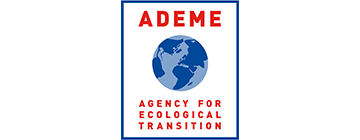Overview
In 2021, final energy consumption (FEC) in Ireland (excluding international bunkers, climatic corrections applied), was 11.1 Mtoe, 10% higher than in 2000. In 2021, the transport sector had the highest energy demand (3.7 Mtoe), followed by residential (3.1 Mtoe); and industry (2.2 Mtoe). Over 2000-2021, FEC in transport increased by 6% but its share in total FEC decreased from 35% to 34% during this period. During the same period, FEC in residential increased by 18%, its share in total FEC increased from 26% to 28% and FEC in industry decreased by 11% and its share in total FEC dropped from 24% to 20%.
Figure 1: Final energy consumption by sector (normal climate)
Source: ODYSSEEEnergy efficiency for final consumers, measured by ODEX, improved by 34% between 2000-2021; an average improvement of 1.9% per year. Energy efficiency in industry and residential improved by 46% and 41%, respectively over this period. Energy intensity in industry reduced dramatically, beginning in the early 2000's, with a move away from energy intensive industries to low energy intensity, high value-added sectors. Residential energy intensity reduced significantly after 2006, due to a combination of improvements to building efficiency, record high oil prices and reduced disposable income. The energy intensity of private cars improved after 2008. Services energy intensity improved but there is limited data available to understand the underlying drivers in this sector.
Figure 2: Technical Energy Efficiency Index
Source: ODYSSEEIreland's National Energy and Climate Plan (NECP) was first published in 2020, and a draft update published in 2023. This sets out Ireland's ambition for energy efficiency savings in the period 2021-2030. In the original 2020 version, a 'With additional measures' (WAM) scenario the NECP projects 62.2 TWh of primary energy savings in 2030, compared to 19.3 TWh already achieved in 2018. The final updated version will address updates to the WAM. As well as the NECP, Ireland’s Climate Action Plan (2024), the 4th National Energy Efficiency Action Plan (2017), National Mitigation Plan (2017), Long Term Renovation Strategy (2017) and National Development Plan (2018) set out the policies, measures and programmes that Ireland is already undertaking, developing and considering to achieve energy efficiency and climate objectives.
The updated draft NECP published in 2023 states that the carbon tax is a cross-sectoral 'with existing measures' (WEM) measure which includes a 'varying carbon tax that increases by €7.50 p.a. and reaches €100 per tonne by 2030'. 'Energy Efficiency in Electricity Transmission and Distribution' and the SEAI 'Behavioural Economics Unit' were considered cross-sectoral in NEEAP4 and EEOS was also reported in the EU commission's 2022 report as one of Ireland's top 3 policy measures.
Table 1: Sample of cross-cutting measures
| Measures | NECP measures | Description | Expected savings, impact evaluation | More information available |
|---|---|---|---|---|
| SEAI Behavioural Economics Unit | yes | The work programme aims to improve uptake of SEAI’s energy efficiency programmes. In particular, the programme intends to better understand the context in which people make decisions; use the latest research in behavioural science; and test interventions, through for example pilots, using rigorous and evidence-based methodologies to determine the effectiveness of interventions before they are scaled. | Unknown | Link |
| Energy Efficiency in Electricity Transmission and Distribution | yes | Measures to improve efficiency include placing targets for reduced losses on the Transmission Service Operator | Medium | Link |
| Carbon tax | yes | Tax on solid and liquid fossil fuels based on the amount of carbon dioxide produced during combustion of the fuel (€/tonneCO2) | Unknown | Link |
| Energy Efficiency Obligation Scheme (EEOS) | yes | The scheme is designed to promote energy efficiency in homes, businesses and communities in Ireland. Under EEOS, the largest energy suppliers and distributors in Ireland are required to achieve annual energy efficiency targets. Large energy suppliers and distributors include companies that sell more than 400GWh of energy per year to final customers. These companies, known as Obligated Parties (OPs), are given specific annual targets based on their market share within the energy industry. | Link |
Buildings
Climatic corrections applied. In households, the space heating energy consumption per m2 improved by 36% between 2000-2021. This was due to a combination of factors including improved building regulations for new dwellings and retrofitting of existing dwellings. Economic factors including the post 2009 recession and high oil prices from 2012 also lead to decreased spending on fuel. After the last recession in 2014, incomes increased and oil prices fell and space heating remained relatively stable between 2015-2021. The unit consumption per dwelling was 1.04 toe/dw, an improvement of 25% on the year 2000.
Figure 3: Energy consumption of space heating per m2 (normal climate)
Source: ODYSSEEFigure 4: Energy consumption per dwelling by end-use (except space heating)
Source: ODYSSEEFinal energy consumption in the residential sector in 2021 was 15% higher than in 2000, as a result of a number of competing factors. On one hand, there were 50% more dwellings in 2021 vs. 2000, as well as larger homes and other factors which contributed to increasing energy consumption in households. This was countered, however, by climatic factors and energy savings when comparing 2021 vs. 2000. Energy savings were the largest driver for a decrease in the energy consumption.
Figure 5: Main drivers of the energy consumption variation of households
Source: ODYSSEETotal energy consumption per employee of services improved by 7% in 2021 vs. 2000. Electricity use in services is driven by the changing structure of this sector and the general increase in use of ICT, electric heating and air conditioning. Data centres are also included under commercial services.
Figure 6: Energy and electricity consumption per employee (normal climate)
Source: ODYSSEEEnergy efficiency measures in the households have largely focused on improving the thermal efficiency of dwellings, through improved regulations on new dwellings and a programme of retrofitting for the existing housing stock.
The “Better Energy Homes” scheme provides a financial incentive to private homeowners to improve the energy performance of their homes. Fixed grants are provided towards the cost measures including attic insulation, wall insulation and heating systems upgrades.The vast majority of home energy efficiency retrofits carried out in Ireland, (including the Better Energy Homes scheme), are considered "shallow" retrofits. A shallow retrofit involves less expensive, simpler to install and less intrusive measures. While these measures are very beneficial, for many houses deeper, more expensive, more complex retrofit works are required to bring the dwelling up to an acceptable level of comfort and efficiency. To investigate the challenges and opportunities of performing deep retrofits on residential dwellings, the government launched the Deep Retrofit Pilot Programme. The lessons from this pilot will inform development of a programme for the large scale deep retrofit of buildings in Ireland. 2005 / 2008 Building Regulations - Buildings other than dwellings were also reported in the EU commission's 2022 report as one of Ireland's top 3 policy measures.
Table 2: Sample of policies and measures implemented in the building sector
| Measures | Description | Expected savings, impact evaluation | More information available |
|---|---|---|---|
| Better Energy: Homes (Residential Retrofit) | This programme, implemented by the Sustainable Energy Authority of Ireland, provides capital grants to householders for the implementation of energy efficiency measures including attic and wall insulation and heating controls with efficient boilers | High | Link |
| Deep retrofit pilot programme | The Deep Retrofit Pilot Programme will investigate the challenges and opportunities of performing deep retrofits on residential dwellings. The lessons from this pilot will inform our approach and support towards the ultimate development of a programme for the large scale deep retrofit of buildings in Ireland. | Low | Link |
| EU-related: Energy Performance of Buildings (Directive 2002/91/EC) - 2005/2008 Building Regulations - Adjustments to Part L- Conservation of Fuel and Energy | In 2008, an amendment to Part L was made to introduce the energy and CO2 calculation methodology for buildings other than dwellings (SI No. 259 of 2008). This amendment also took the opportunity to consolidate all Part L amendments since 1997 thus revoking all previous amendments (i.e. SI873 of 2005 and SI845 of 2007 etc.) | Medium | Link |
Transport
Transport energy consumption was 22% higher in 2021 (3.10 Mtoe) when compared to 2000 (2.55 Mtoe). Road transport remains dominant, holding a 95% of the share of transport energy consumption in 2021, an equal share to that in 2000.
Figure 7: Transport energy consumption by mode
Source: ODYSSEEPassenger traffic increased by 47% over 2000-2021 with passenger traffic by cars increasing from 34.6 to 53.8 Gpkm, or 56% over the period. Passenger traffic in buses has also increased by 17% over the period, but its share has fallen from 16% in 2000 to 13% in 2021.
Figure 8: Modal split of inland passenger traffic
Source: ODYSSEEFreight also remained dominated by road transport and held a 99% share of freight traffic in 2021. Road freight has remained relatively stable, increasing by 1% in 2021 vs. 2000. From an already low base in 2000 the volume of rail freight decreased by 86% between 2000 and 2021, decreasing its share of total freight from 4% to 1%.
Figure 9: Modal split of inland freight traffic
Source: ODYSSEETransport energy consumption in 2021 was 5.7% higher than in 2000, increasing from 3.51-3.71 Mtoe. This is a result of a number of competing factors. On one hand, there was an increase in activity as well as a modal shift which contributed to increasing energy consumption in transport. This was countered, in part, by energy savings and other factors. Energy savings were the largest driver for a decrease in energy consumption, however, these savings did not outstrip increased activity.
Figure 10: Main drivers of the energy consumption variation in transport
Source: ODYSSEEVehicle registration tax and annual motor tax were determined by engine size prior to 2008. From 2008 both registration and annual motor tax were restructured to be based on the specific carbon emissions of the car, with lower emission cars liable for reduced tax rates compared to higher emission cars.
In 2009, EVs were identified as an important element in efforts to achieve both energy efficiency and greenhouse gas emissions reductions targets as part of the EU Climate Change-Energy Package.
VRT/Motor tax aligned with emissions was also reported in the EU commission's 2022 report as one of Ireland's top 3 policy measures.
Table 3: Sample of policies and measures implemented in the transport sector
| Measures | Description | Expected savings, impact evaluation | More information available |
|---|---|---|---|
| Restructuring of Vehicle Registration Tax and Annual Motor Tax | Restructuring of Vehicle Registration Tax and Annual Motor Tax on the basis of CO2 Emissions | High | Link |
| Deployment of Low Emission Vehicles | Grants for EVs | Medium | Link |
Industry
Industry energy consumption in 2021 was 11% lower than in 2000. Ireland's economic structure has changed considerably since 2000. All industrial branches decreased in energy consumption, with the exception of non-metallic minerals and non-ferrous metals which have increased by 19% and 1%, respectively.
Figure 11: Final energy consumption of industry by branch
Source: ODYSSEEIndustry total energy consumption has decreased from 2.47 in 2000 to 2.20 Mtoe in 2021. This was a result of a number of competing factors. On one hand, there was a large increase in activity and other factors which contributed to increased energy consumption. This was countered, by a change in structure and energy savings. The change in industry structure was the largest driver for a decrease in energy consumption. Care must be taken when examining the energy intensity of industry for Ireland. This was well illustrated in 2015 when the manufacturing value added grew by more than 85%, resulting from the transfer of intellectual property into Ireland with little corresponding energy use.
Figure 12: Main drivers of the energy consumption variation in industry
Source: ODYSSEEThe Large Industry Energy Network is a voluntary grouping of companies that work together to develop and maintain robust energy management. Regular networking events, workshops, seminars and site visits provide opportunities for members to meet and learn from energy experts and from fellow energy managers.
The Accelerated Capital Allowance is a tax incentive which encourages companies to invest in energy saving technologies. The ACA allows companies to write off 100% of the purchase value of qualifying energy efficient equipment against their profit in the year of purchase.
Table 4: Sample of policies and measures implemented in the industry sector
| Measures | Description | Expected savings, impact evaluation | More information available |
|---|---|---|---|
| Large Industry Programmes, Large Industry Energy Network (LIEN) | The Large Industry Energy Network (LIEN) is a voluntary grouping, facilitated by the Sustainable Energy Authority of Ireland, of companies that work together to develop and maintain robust energy management. Regular networking events, workshops, seminars and site visits provide the opportunity for members to meet and learn from specialists, including energy experts, and also from their fellow energy managers on the solutions that work. By learning from experts and sharing knowledge and experiences, members save valuable research time, invest wisely and maximise returns. | High | Link |
| Tax Relief for Energy-Saving Equipment: Accelerated Capital Allowance | The Accelerated Capital Allowance (ACA) is a tax incentive which aims to encourage companies to invest in energy saving technology. The ACA allows companies to write off 100% of the purchase value of qualifying energy efficient equipment against their profit in the year of purchase. | High | Link |



